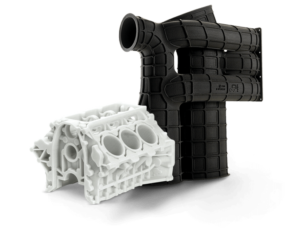To Build A More Agile Supply Chain, Balance Supplier Consolidation and Supplier Diversification
In the present landscape, establishing a resilient supply chain within the United States has taken on heightened significance. Many manufacturers are actively reducing their reliance on China, driven by the realization of their supply chain vulnerabilities. This shift was initially prompted by tariffs but was starkly emphasized by the disruptions caused by the COVID-19 pandemic in 2020.
Factory closures, political instability, and natural disasters have spurred procurement professionals to reassess supply chain strategies and seek local partnerships.
Even if your entire supply chain operates domestically, optimizing your network of suppliers remains a key risk-mitigation strategy. This article delves into the advantages of both supplier consolidation and diversification and offers practical insights into achieving a balanced approach for fostering an agile supply chain.
Prior to delving into the strategies for balance, let’s explore the merits of each approach.
Supplier Consolidation: Gains in Efficiency, Cost, and Speed-to-Market
The Pareto Principle, often termed the 80/20 rule, underscores that a majority of outcomes stem from a minority of efforts. Manufacturers that consolidate their supplier pool often wield greater bargaining power, translating to improved processes and pricing.
Efficient Processes and Procedures
Supplier consolidation can bolster your team’s agility in two key ways: by streamlining contacts and reducing the complexity of procurement procedures. While it may seem intangible, the expenses tied to requesting quotes from purchasing and engineering can accumulate significantly.
Project quoting often necessitates categorizing parts based on attributes like type or manufacturing process. If different suppliers require diverse quoting methods—via portals, email, or specific channels—efficiency naturally wanes.
Minimizing Administrative Costs
Administrative costs are frequently overlooked in cost-saving initiatives. Seeking price reductions or rebate programs tied to larger quantities are typical tactics. Fewer suppliers can usher in “soft” savings, reducing the effort expended on purchase orders, data entry, and clarifications.
Accelerated Time-to-Market
Speed-to-market gains traction with supplier consolidation, particularly for companies reliant on their supply chain for comprehensive quality control. Relying on a select group of dependable vendors simplifies oversight, mitigating defective parts, field failures, and customer complaints.
Action Steps for Supplier Consolidation: Agile Supply Chain Pursuit
To embark on this journey, outline clear objectives and assess your supplier base against these criteria. Here are five actionable steps to guide your consolidation strategy:
- Holistic Cost Assessment: Beyond piece prices, consider the broader cost impact of adding or subtracting suppliers. Evaluate logistics, process agility, and speed-to-market implications.
- Logistics and Proximity: Gauge the geographic proximity of vendors to your operations. Weigh potential freight savings against cost reductions.
- Process Integration: Scrutinize whether production is in-house or outsourced, and assess the number of touchpoints in the manufacturing process.
- Speed-to-Market Boost: Recognize how consolidation can expedite time-to-market through streamlined processes and enhanced quality control.
- Partner Collaboration: Engage with suppliers closely aligned with your goals, promoting collaborative partnerships and shared objectives.
Looking Ahead: A More Agile Supply Chain
In an era of uncertainty, an agile supply chain stands as a competitive advantage. By balancing supplier consolidation and diversification, manufacturers can navigate disruptions while enhancing efficiency, cost savings, and speed-to-market.
Engage us to initiate your projects, receive guidance, and experience rapid prototype delivery in as little as five days. Our engineering experts ensure a seamless design process. Kickstart your project today!


